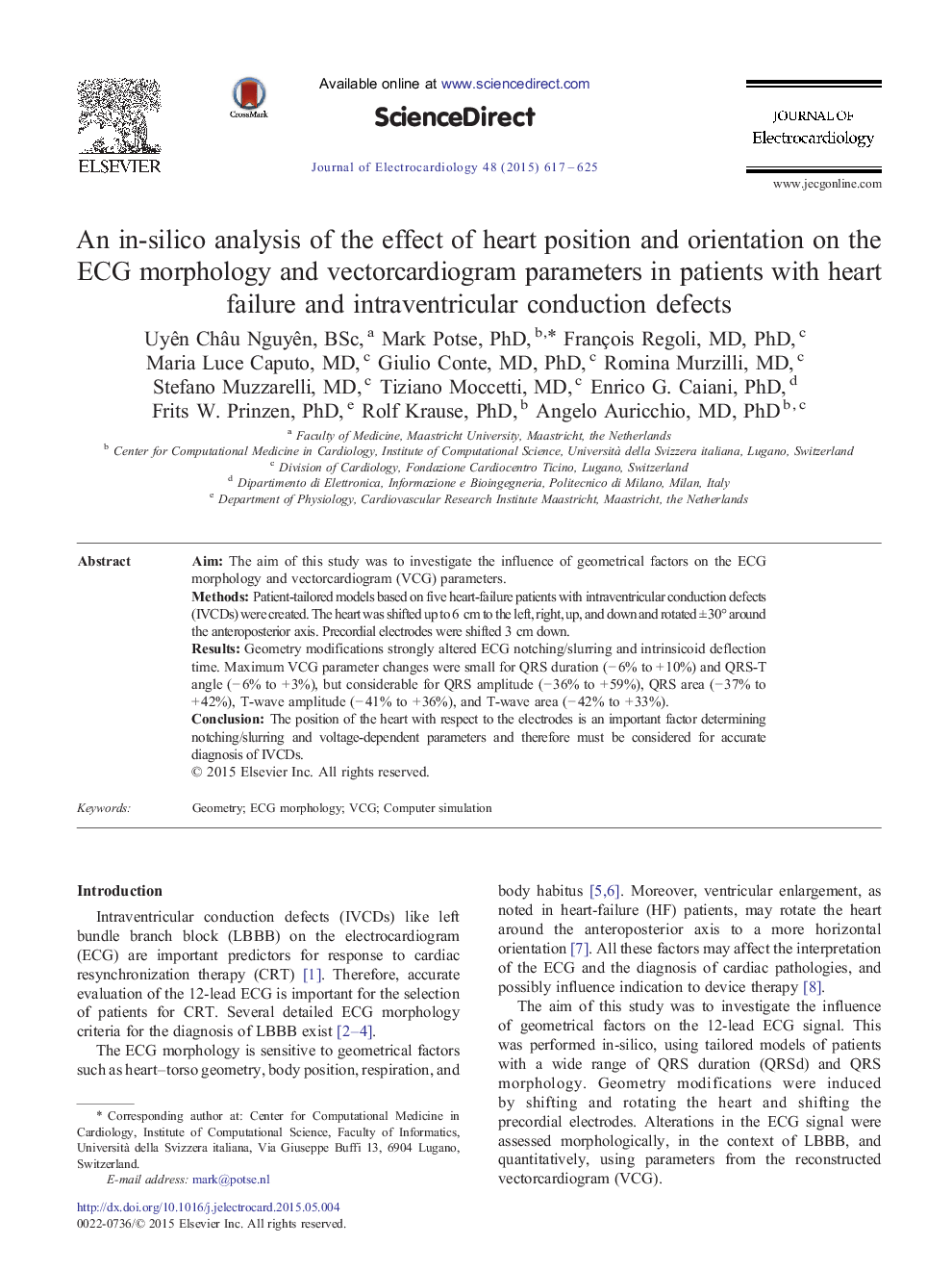| کد مقاله | کد نشریه | سال انتشار | مقاله انگلیسی | نسخه تمام متن |
|---|---|---|---|---|
| 5986280 | 1178842 | 2015 | 9 صفحه PDF | دانلود رایگان |

- 5 patient-tailored simulation models based on heart-failure patients were created.
- Geometry modifications were induced to the heart and precordial electrodes.
- Intrinsicoid deflection time and notching/slurring depend on geometrical factors.
- QRS duration and QRS-T angle are not affected by geometrical factors.
- Voltage-dependent parameters (e.g. QRS and T-wave area) are geometry-dependent.
AimThe aim of this study was to investigate the influence of geometrical factors on the ECG morphology and vectorcardiogram (VCG) parameters.MethodsPatient-tailored models based on five heart-failure patients with intraventricular conduction defects (IVCDs) were created. The heart was shifted up to 6 cm to the left, right, up, and down and rotated ± 30° around the anteroposterior axis. Precordial electrodes were shifted 3 cm down.ResultsGeometry modifications strongly altered ECG notching/slurring and intrinsicoid deflection time. Maximum VCG parameter changes were small for QRS duration (â 6% to + 10%) and QRS-T angle (â 6% to + 3%), but considerable for QRS amplitude (â 36% to + 59%), QRS area (â 37% to + 42%), T-wave amplitude (â 41% to + 36%), and T-wave area (â 42% to + 33%).ConclusionThe position of the heart with respect to the electrodes is an important factor determining notching/slurring and voltage-dependent parameters and therefore must be considered for accurate diagnosis of IVCDs.
Journal: Journal of Electrocardiology - Volume 48, Issue 4, JulyâAugust 2015, Pages 617-625